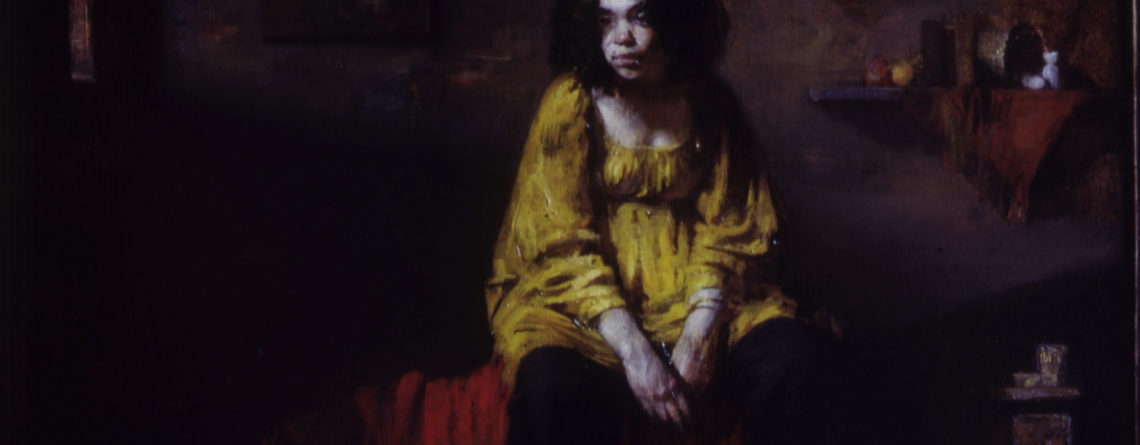Painting a Face: More or Less Detail?
Painting a face is more involved than painting a vase or a tree. This is largely because the painter needs more drawing ability when painting a face. With that said, how do you decide how much detail to put in a face? Does it depend on its size, or the degree of finish desired, or on style?
Every Painting is Based on a Visual Idea
The size of the figure is part of a visual idea. If you want to do an in-depth study of a model’s face, then the size of the head should be larger, and you should choose a larger canvas for the composition. If the face is part of an all over interior design (as in this detail from a painting of David A Leffel’s painting, “Claudia”), it makes sense to have the face smaller, where less detail is required. In the painting of Claudia, the idea is more about her costume and gesture as part of an entire interior, rather than a specific portrait of her face.
The size of the head determines how much detail you need to satisfy your idea. An artist uses detail and value contrast to draw the viewer’s attention. If you are painting a small portrait, like the one of Claudia, keep it simple by using less detail and keeping the light shapes and the shadow shapes simple and flat (values kept together).

In the next example, “Fernanda,” one of David’s most compelling oil portraits, he uses detail to study this classic face. Since the entire painting is about the portrait of a dear friend, more detail is needed. Notice that he uses almost no detail in the hair and has left the red cloth over her head very sketchy. But in order to draw the viewer’s eye to the face, he has painted the features in great detail. And even though he has used a cast shadow over an eye as in the above example, here he has treated them both very differently. In “Fernanda,” the right eye is highly finished which draws the viewer to her expression. He even builds up the paint to make that area of the face more compelling. Detail and paint quality are devices artists use to control where the viewer looks.

David A Leffel/ “Fernanda”/ Oil on canvas/ 17″ x 14”

Detail of “Fernanda”
In both paintings, the values are kept simple within the shapes of lights and darks. This makes the entire painting a strong and compelling image that reads more easily from a distance. By contrast, a small form looks weaker if it has too much detail or value variation. A larger shape can handle more information and detail and still read well from a distance because there is more room to travel from the lightest part (the forehead) to the darker light (the chin). That “slide” of values still reads as one value from a distance, and therefore still maintains its strength.
You can learn by practice and discover your potential of what works for you as an artist.


Leave a Reply
You must be logged in to post a comment.